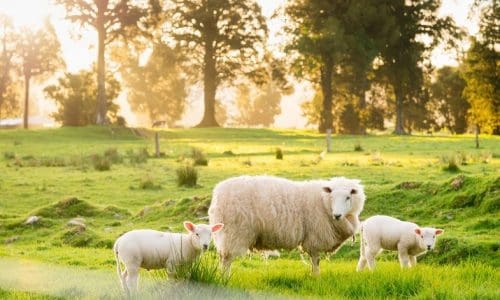
THE market for grazing properties that include potential or existing carbon projects is seen as relatively immature due to few transactions and limited transparency.
This week’s property review examines whether it is a matter of time before capturing carbon is added to the value of Australian grazing land.
CBRE agribusiness national director Simon Altschwager said at this stage, there have been very few transactions of grazing properties with carbon projects in place.
“Those transactions that have occurred have been difficult to analyse due to limited transparency on the terms of the carbon project,” he said.
“However, the additional income stream is likely to provide significant appeal to potential purchasers, fundamentally altering the demand/supply equation and putting upward pressure on values,” Mr Altschwager said.
In some instances, there may be direct productivity enhancements as a result of the carbon project, such as soil carbon sequestration.

Simon Altschwager
“There is clearly some upside with the additional income allowing for an indirect productivity increase through reinvestment in the farm, such as new fencing, watering points and pastures,” Mr Altschwager said.
Unfortunately, there were often negative trade-offs as a result of these carbon projects.
“Some reduce the productive potential of the property, even where the project only impacts a portion of the farm.”
“The net result on property values will differ depending on the specifics of each project. Factors to be considered include the breadth of the project area, the impact on productivity and the level of income received.”
Mr Altschwager said in some cases, the income received may not be sufficient to offset the reduction in carrying capacity.
“This is less likely to be the case with the expected increase in carbon price as has already been experienced over the last 12 months.”
While the overall land value may increase, he warned the underlying decreases (as a result of reduced agricultural productivity), can impact on borrowing capacity.
Mr Altschwager said only time would tell whether the increasing consumer demand for more sustainable projects and adapting government regulations in this area will increase the appeal of carbon farming projects, driving demand for suitable properties, and therefore land values, to higher levels.
Freight train
His colleague, CBRE valuer James Beveridge believes natural capital is coming like a ‘freight train’ for Australian agriculture.
“It is on the doorstep, with many funds and investor groups actively seeking rural properties for carbon projects. While this is a positive, there is still uncertainty as to where the market is headed and how it will play out in terms of future returns.”

James Beveridge CBRE
Mr Beveridge said at present there was no uniformity across the finance sector.
“The standing instructions for assessing the market value of a property with a carbon project in place differ from bank to bank,” he said.
However Mr Beveridge said in most cases, three values are being sought by financial institutions for those seeking a mortgage.
These included:
- The current market value of the property ‘as is’
- The value of the property with the carbon project in place
- The present value of the income stream being derived by the project.
Mr Beveridge said there were many complexities involved in determining these values.
“No one instruction fits all and the market evidence for modelling is still lacking transparency and uniformity.”
He said said at present, human induced regeneration (HIR) projects and the sequestration of carbon in grazing systems were two main projects valuers are keeping an eye on.
HIR projects comprised the majority of schemes running in Australia and are designed to achieve vegetative cover by carrying out eligible activities that encourage regeneration.
Mr Beveridge said HIR projects required discounted cashflow models to determine the present value of the cashflow generated.
“In comparison, the sequestration of carbon in grazing systems could be demonstrated by an increase in stocking capacity or a combination of both methods.”
Mr Beveridge said when valuing a grazing property, various land types and stocking rates are considered.
“If a landholder decided to lock-up an area for a carbon project (ie. revert grazing country to timber), then agricultural production is reduced. However, it is usually compensated by the income stream generated from the carbon project.”
Adding additional complexity to these valuation requests, Mr Beveridge said the inputs for discounted cash flow models are difficult to determine, because there is little market evidence.
“Valuers need transactions of properties that include carbon projects to use as market evidence. With few participants or buyers, valuers can only theorise what a discounted cash flow might look like.”
He said the market might be immature, but it is about to change.
“Corporates and institutional investors are looking at these properties as investment propositions. They will be the ones adopting their own discount rate, which will give some direction for valuers analysing the sales data.”
JLL, Peter Honnef
JLL agribusiness valuer Peter Honnef said when it comes to grazing and carbon projects, valuers are now talking about multi-uses.
“In this instance, there are two very different land uses. While grazing is the highest and best use, the vendors are generating an additional income stream in response to the global and Australian demand for carbon credits.”

Peter Honnef
Mr Honnef said income has value, but it comes with risks.
“A property generating $100,000 per annum over 25 years from a carbon project isn’t worth an extra $2.5 million. It doesn’t work like that.”
“Discounts must be factored in because the value of the cash flow (over the course of the carbon project) has risk, and that is where the difficulty lies. Those risks are extremely difficult to pinpoint.”
Mr Honnef cited the residential development industry as an example.
“Developers subdividing land face the risk of changing markets and demand. If the property market is buoyant, they do the sums, buy undeveloped land at a certain rate, spend some money and make a good return.”
He said development investments are ‘as risky as you can get’, with those transactions discounted by as much as 20 to 30 percent.
“Carbon is just another investment opportunity. However, due to the lack of perceived integrity in some carbon projects, the income stream is being heavily discounted. This discount erodes the value of the cash flow over time.”
Mr Honnef said the risks are difficult to determine because the market is still immature.
“There have been very few transactions where people have purchased a grazing property for a premium due to its carbon income stream.”
“Demand for carbon is getting stronger, but the methods are perceived as lacking integrity. When they are tried and tested, banks, valuers and producers will become more confident to recognise that added value.”
Mr Honnef said for the risk-taking investor, carbon represents a great opportunity.

HAVE YOUR SAY